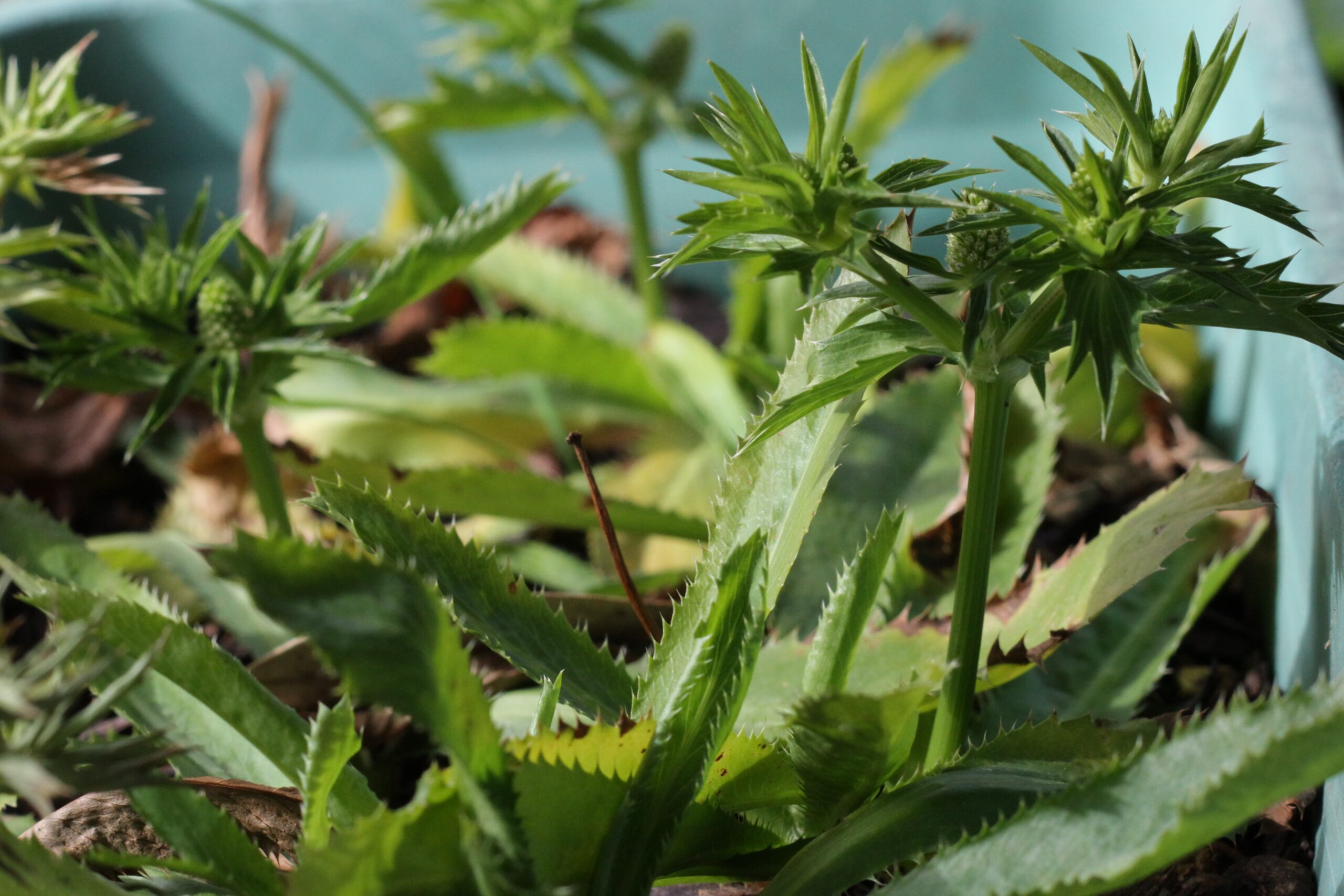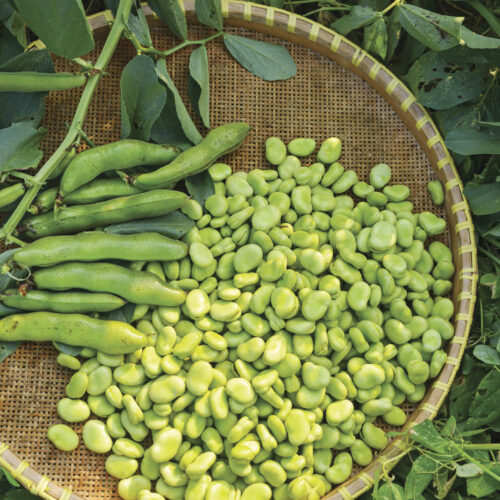Grow culantro… and no, that is not a typo!
2018-11-19T04:49:52+11:00
This long-leafed coriander is worth growing in all climates says Penny Woodward.
Culantro (Eryngium foetidum) is also known as long-leafed coriander. This herb comes originally from Central and South America where is has been used for centuries to add flavour to soups and stews.
Low-growing to about 40cm, culantro produces a rosette of stiff, dark green, elongated, toothed leaves. Strong stalks with toothed leaves grow from the centre of this, and these are topped by conical, pale green, tiny, pineapple-shaped flower heads. The whole plant is strongly pungent with a delicious and distinctive scent and flavour similar to coriander (Coriandrum sativum).
Culantro is a short-lived perennial that’s grown as an annual in temperate regions but thrives and is perennial in more tropical climates. Grow from seed sown in punnets in winter or early spring, or all year in sub-tropical and tropical regions. Plant seedlings out once they are big enough to handle easily. Space plants about 30cm apart in all directions. Culantro grows in most soils as long as they are well drained, and likes a position in semi-shade or with morning sun, as very hot afternoon sun causes it to wilt. It also grows beautifully in pots, and this has the added advantage in colder regions of being able to move the pot under cover or indoors in autumn to prolong the growing season. Remove the flower heads to encourage leaf growth, and feed once a month or so with seaweed fertiliser or fish emulsion. Snails and slugs love culantro, so be vigilant in removing them or protect with a circle of ash, sawdust or a copper band around the pot.
Eat leaves fresh and cooked in a range of dishes, especially those where the flavour of another ingredient needs to be disguised. Culantro is often used as a substitute for coriander, but unlike coriander it retains its flavour when dried. Finely chopped leaves make an excellent garnish on all sorts of dishes, but in particular with fish. Stir chopped culantro into soups such as Vietnamese beef and noodle, or hot and sour fish soups, or add a whole leaf and remove before serving. Add culantro to steamed rice and toss into mixed vegetables, curries and curry pastes. Finely chop culantro leaves and add to dips such as hummus.






